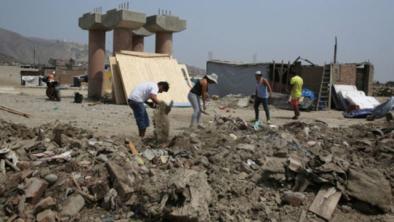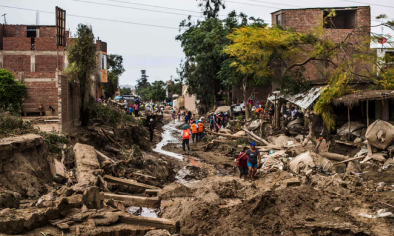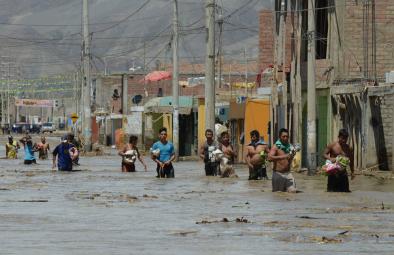Science Source
Variability and climate change in the Mantaro River Basin, Central Peruvian Andes
- States that 83% of the annual precipitation in the Mantaro River Basin (to the east of Lima) takes place between October and April, of which 48% are distributed almost equitably between January, February and March
- Uses monthly precipitation data of 38 meteorological stations to identify dry and rainy periods between the years 1970 to 2004—looks at the rainy season (September-April), for the period of September-December and January-April
- Identifies rainy or dry periods using the Standardized Precipitation Index
- Detects 8 rainy periods and 6 dry periods during the 30 years of analysis data
- Finds that the years with excesses of precipitation occurred at the beginning of the 70s and during the first half of the 80s—finds that 1973 was the year with most intense and generalized rains in the Mantaro river basin
- Finds that precipitation deficits happened in the second half of the 70s and 80s and in the beginnings of the 90s—finds that the years 1991 and 1992 had the most significant deficits
- Presents a diagnostic of the relationship between El Niño and precipitation in the Mantaro basin using precipitation data from 50 stations located in the Mantaro basin in the period 1960-2004
- Uses the following indices of sea surface temperature anomalies: Niño 1+2, Niño 3, Niño 3.4 and Niño 4
- Finds there is no significant relation between precipitation in the Mantaro river basin and the SST anomalies off the northern coast of Peru, Niño 1+2 region; as we consider the SST in regions more distant from the coast of Peru, the correlation increases; the relations are stronger with the SST in El Niño 4 region
- Finds a warm anomaly in the central or western equatorial Pacific inhibits precipitation in the Central and South part of the river basin, whereas a cooling in that region favors precipitation in the river basin; finds, however, that these relations are not perfect: for example, the very strong 1997- 1998 El Niño event was not a dry period in the river basin, but El Niño 1982-1983 was dry
- Identifies a significant negative relation between the variations of the sea surface temperature (SST) in the central equatorial Pacific (Niño 3.4 and Niño 4 regions) and precipitation in the Mantaro river basin—that is, El Niño tends to be associate with smaller precipitation in the Mantaro river basin
- Finds the correlations between precipitation and the SST in the tropical Pacific are greater during the period of January to March that during October to December

Related Content
Headline

Apr 19, 2017 | The Guardian via AFP
Death toll rises to 113 in Peru floods, mudslides
Headline

Apr 13, 2017 | the Guardian
How can Peru prepare to withstand more devastating floods and landslides?
Headline

Apr 9, 2017 | ReliefWeb
Heavy rains cause landslides, flooding in Colombia and Peru
Headline

Apr 7, 2017 | Inside Climate News
Peru's floods follow climate change's deadly trend


